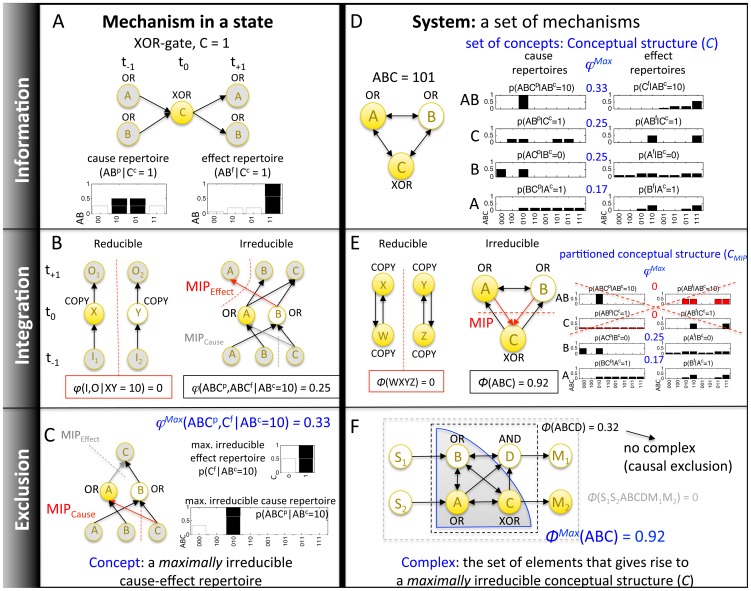Figure 9. The information, integration, and exclusion postulate applied at the level of mechanisms (A–C) and systems of mechanisms (D–F).
(A–F) Each node is a binary logic-gate mechanism that can be in either state ‘0’ (white) or ‘1’ (yellow). The logic-gates and their connections are represented as neural circuits rather than electronic circuits: directed connections between the nodes indicate the inputs and outputs of the logic gates. The mechanisms labeled A, B, and C correspond to system ABC = 101 shown in (D). (A) Information: Mechanism C in its current state ‘1’ generates information as it constrains its causes (the past states of its inputs AB) and effects (the future states of its outputs AB) compared to their unconstrained distributions (gray distribution). Past and future nodes whose state is unspecified are shown in gray. (B) Integration: The elements X and Y do not form an integrated higher order mechanism, since XY is reducible to its component mechanisms X and Y (φ = 0). However, the elements AB in state ‘10’ do form a higher order mechanism, since AB specifies both, irreducible causes and irreducible effects (the minimum information partition (MIP) on both, the cause and effect side leads to a loss of information). Integrated information φ of AB = 10 is evaluated as the minimum of the cause and effect integrated information: φ = min(φCause, φEffect), here φ = φEffect = 0.25, taking all inputs and outputs of AB into account. The overall MIP of AB over all its inputs and outputs is thus MIPEffect, labeled in red. (C) Exclusion: Of all input-output combinations of mechanism AB, the “concept” of AB = 10 is its maximally irreducible cause repertoire, here over all input elements ABC (φCause = 0.33, same as in (B)), together with its maximally irreducible effect repertoire, here over output element C only (φEffect = 0.5). This means that AB has its maximally irreducible effect repertoire specified on C, not on ABC or any other output combination. The concept's integrated information is φMax = min(φCause, φEffect) = φCause = 0.33, its overall MIP is MIPCause, labeled in red. (D) System information: The system ABC = 101 gives rise to a conceptual structure with 4 concepts. (E) System integration: The system WXYZ is reducible into the subsets WX and YZ. WXYZ cannot exist as a system from the intrinsic perspective. By contrast, system ABC is irreducible. Its minimum information partition (MIP) leaves the concepts of A and B intact, but destroys concepts C and AB. Integrated conceptual information Φ(ABC) is evaluated as the difference between the whole conceptual structure C and the partitioned conceptual structure CMIP (see Text S2 in [15]). (F) System exclusion: Of all sets of elements in this larger system, the set ABC has ΦMax and thus forms the main “complex”. ABCD, for example, also specifies integrated conceptual information Φ, but cannot form another complex since it overlaps with ABC and Φ(ABC)> Φ(ABCD) (see Fig. 2).

